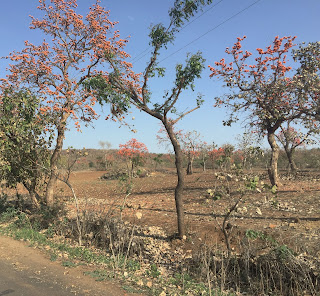


There is a bounce, energy, even a jauntiness, these days in urban India. An economy in rebound, investor confidence, new political scenarios, global plaudits. Spring it seems, is in the air.
Sadly, for millions of India’s poorest mothers and their children, seasons barely change. Between conception and age five, anaemia prevails in over 50 percent of mothers. Some 50,000 women die in childbirth. About 1.3 million children die before they are five, more than half of them in their first thirty days. Of kids who survive, over forty percent are malnourished. These are amongst the worst health outcomes in the world.
The situation prevails, even with several fundamentals in place. The basic solutions to most maternal and child health (MCH) problems are known. There is a structure for public health delivery down to the villages, and well-conceived programs exist, such as the National Health Mission. The Integrated Child Development Services program focuses on the care of under-six children. The problems many states face is not of funding, but how to spend money fully and well.
Problems along the conception to five spectrum are interlinked. Anaemia during pregnancy can lead to low birth-weight and that can increase neo-natal deaths. Silver-bullets don’t exist, and integrated solutions are needed. Conceiving and delivering such solutions at scale is difficult. Scaling up is the biggest challenge in India’s public health delivery
Recently I met Chanda (names changed) 23, in a small village of a northern state. Gokul, her fourth child, had just died. He weighed less than two kilos at birth, and perished within two weeks of severe diarrhoea. Scaling up MCH delivery requires effective supply, vibrant demand and an enabling environment.
The supply side did not serve Chanda. The government nurse-midwife had no data on Chanda, and she was simply left-out. The baby was born at home, as accessing an institutional facility was difficult. Gokul could not be treated since there was no medical practitioner nearby
Vibrant demand implies an aware and empowered consumer. No one told Chanda about the importance of ante-natal check-ups, post natal hygiene, or exclusive breastfeeding. She began breast-feeding only two days after Gokul was born, as her father-in-law was away, and his blessing was required first. She had to get back to her work as a labourer, soon after. Chanda was neither aware nor empowered
An enabling environment reinforces supply and demand. Social and cultural norms are crucial. Village structures, such as panchayats and women’s groups, must be supportive. There must be media interest and policy cover. None of these applied for Chanda. Her father in law was just the first, and sufficient, disenabling element.
There are programs across India that resolve these issues innovatively for particular segments of the maternal and child health spectrum. There are some that integrate across segments. The scaling up of these programs to a state level does not happen automatically. It requires partnership between, visionary state government, a capable implementer, and a rare type of donor
Scaled delivery needs partnership with visionary state government, allowing an outside agency to work with and through the public system. Innovations coming from a few focus segments could then be amplified state wide. This is the way to scale and sustainability
There is urgent need for implementing agencies that bring knowhow of delivery at scale from experience and inquiry. We have learnt about managing demand and supply, and creating an enabling environment, from implementing the National AIDS Control Program (3) through Avahan, and studying programs like polio. We derived many lessons from business
Many donors do not consider scale or sustainability. Health delivery deploys many business methods. This suggests a natural appeal for CSR funding and philanthropy. Donors willing to risk the uncertainties of health delivery at scale, and the embracing of possibly thorny government partnership are needed.
There is also need for donors who give voice or skills. They could be societal leaders, doctors, managers, or young interns.
We see visionary government and new-game donors emerging slowly but surely today. The curtain on a virtuous partnership is already going up in Rajasthan. This week we signed an MOU for a program to change the record in maternal and child health in Rajasthan, with Chief Minister Vasundhara Raje and Ratan Tata present.
Perhaps spring is in the air after all!
Ashok Alexander is the Founder-Director of The Antara Foundation
Disclaimer: The article has been written in personal capacity, and the views and opinions expressed are those of the author